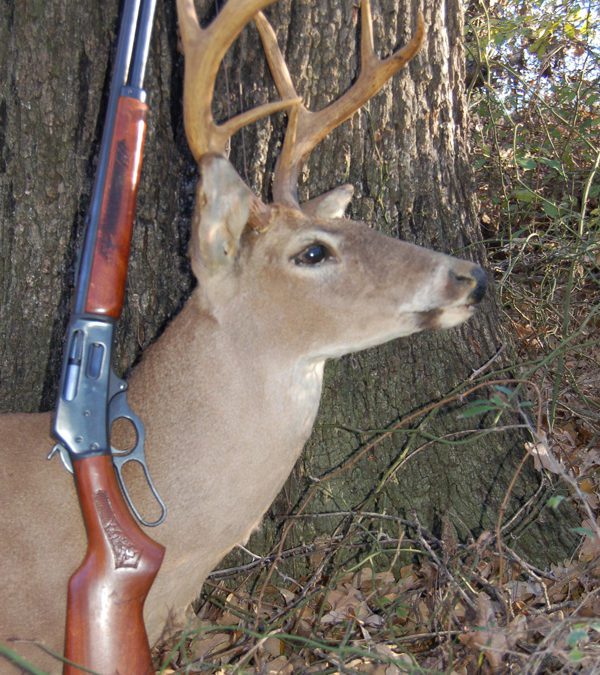When I was a youngster growing up in northeast Texas, we fished strictly with cane poles that we cut from a stand of switch cane that grew near the back of our little farm. We usually kept a 12-foot Calcutta pole or two for when we needed to really reach out from the bank to fish a bass hotspot. We would set out twenty or so poles along Pecan Bayou for catfish when we were in the mood for a big fish fry. This was fishing at the base level. We simply put a hook on a line with a weight and baited with a piece of cut bait. The base end of the pole was stuck into the creek bank and we periodically ran our ‘set hooks.’
My mother did own one steel fishing rod with a ‘knuckle buster’ level wind reel, but the Calcutta and cane poles saw the most action. On my last fishing trip to Caddo Lake in deep east Texas, I fished with a guide that still used Calcutta poles for all his crappie fishing. I discovered the equipment I used as a boy continues to work as well as ever in the modern age of sensitive graphite crappie rods and state of the art reels.
While hunting mule deer up in northern New Mexico a few weeks ago with my friend David Williams who owns Hunters Supply www.hunterssupply.com, I was re-introduced to a rifle that I used back in the mid-sixties when I first began pursuing whitetail. We were sitting around the camp one evening after a day in the mountains, talking about old times, when David asked me what rifle I used when I first began hunting deer. Actually, I didn’t use a rifle at all but rather a bolt-action Mossberg .410 shotgun loaded with a rifled slug. Deer were very scarce in the region back in those days and I never had the opportunity to use this extremely underpowered round in the deer woods, which was probably a good thing.
I did receive a Marlin 336 30-30 when I was about 13 years old and it was my sole deer rifle until I was well into my twenties. It was equipped with iron sights and with the keen eyes of youth, I could consistently keep the shots in a 4-inch group at 100 yards, plenty good enough for the close-range type of hunting I did.
When David inquired what had become of that old rifle, I told him I sold it. That happened back in the day when I had been brainwashed by all the gun writers who said I needed to be hunting with one of the more flat-shooting calibers. I also mentioned that I would give a thousand dollars to have it back! Then he excused himself and soon returned with a Marlin 30-30 built back in the seventies and handed it to me.
“Here, Luke, it’s yours. It’s been sitting in my gun safe for several years. Let’s take it to the range after the morning hunt tomorrow and see how it shoots.”
The old rifle brought back a flood of great memories of deer hunts past; of that first buck I shot on my Uncle’s place in Red River County and that first hunt down in Llano when I was in my early twenties and the goat-horned spike I killed with it.
The morning hunt resulted in sighting several cow elk at close range, but the mule deer bucks were laying low. After a quick lunch, we took the little rifle to the range, set up a target at 50 yards and I fired a three-shot group of 2.5 inches; pretty good for an old shooter with ‘rebuilt eyes’ thanks to eye surgery a year ago. I learned I could shoot iron sights as well as ever and was being taken back to a long-gone era, fifty years in the past! David ‘drifted’ the rear buckhorn sight to the right and raised the sight to compensate for my group which was below the bull’s eye. I was soon shooting dead on at 50 yards and consistently hitting his 8-inch metal ‘gong’ type target at 100 yards.
On the long drive back home from New Mexico, I was making plans to hunt deer and hogs close to home with my ‘new’ OLD rifle. The spot I usually hunt would be ideal for my new relatively short-range rifle. Back in the woods, a long shot would be 50 yards. I’ve taken a lot of game here with bow, big bore air rifle and even a little .223 at night using a Photon XT digital night scope. To date, I’ve hunted the spot several times and passed on a couple of wild hogs, waiting for that first mature whitetail buck.
It feels good to ‘tote’ the light little rifle back into the woods. I do need to install a set of swivels so I can sling the rifle over my back. I think I’ll keep using the iron sights rather than scope the rifle. Granted, during very low light conditions early in the morning or just before darkness, I might have to pass on a shot much over 30 yards, but my desire is to continue hunting much as I did fifty years ago.
I did a bit of checking on an old trajectory chart Marlin used to produce. With a 25-yard zero, a 150 grain 30-30 bullet is 1.5 inches high at 50 yards, 2.75 high at 100 and .75 inches low at 200 yards. This makes the venerable old thutty-thutty a viable 200-yard deer rifle. Gosh, wish I’d known this 50 years ago – I’d probably still have my ‘first’ deer rifle!
Listen to ‘Outdoors with Luke Clayton and Friends’ on radio stations from Nebraska to Texas weekends on anytime online at www.catfishradio.org.

